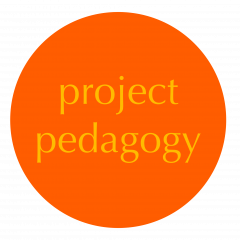Over the last few years, we (Gillian Calder and Rebecca Johnson) had found ourselves in conversation about the amazing creativity and insight we had been seeing in the work of our students in Business Associations, Law and Film, Family Law, and Sexual Orientation and the Law. There was creativity both in project-based work, and in papers that took less-conventional approaches to legal subjects. We saw these projects as highly responsive to the demands of Law Societies and the profession, that lawyers develop the kinds of creativity necessary to work in a world of legal and social change.
We found ourselves frequently in conversation with academics, practitioners, and judges about the work that we had seen emerging in our classes, work that we believe to be important in the development of legal theory, legal process, and legal practice. In telling others about the work being done by students, we wished for a way to honour the work by more explicitly acknowledging the authors, and enabling others to engage with their work.
From time to time, we suggested that students submit their work for publication, but we saw challenges here. There are long time-lines involved in conventionally peer-reviewed legal journals, and even as professors, we can see a lag of several years between the time we complete a paper, and the time it finally emerges in print. For students, there is a further barrier since not all journals will accept student work, or the journal will require significant change in order to bring the work within genre conventions (work count, depth of research, citation styles, topic, etc). There are happily some journals that do promote student work. But here too there are challenges, since a journal format is not necessarily optimal for less conventional forms of scholarship or work. Journals cannot easily, for example, support the visual dimensions of some of this work, or enable spaces to discuss the “process” dimensions of the work (what one learns, for example, from trying something that didn’t work in the way one expected – a very important dimension of reflective practice).
And thus the blog.
We imagine this site as a kind of provisionally peer-reviewed blog, collaboratively curated. We see this site as a place for student work to be part of an ongoing conversation about law, part of a creative intellectual commons. It is also a place for us as teachers of law to speak about the learning we have done through engagement with these projects. The building of a community requires the building of connections, the sharing of insights, and the creation of a place where people can gather. We hope this blog can be a spot for this sort of building.

Rebecca Johnson


